Вы не зашли.
Объявление
"Давайте только проявлять больше внимания, терпимости и уважения к чужому мнению — вот и всё." — Gennadius.
— О размещении изображений на форуме, О рекламе на форуме
#1701 20 December 2011 23:33:02
- Wolf
- Без пяти минут зоолог

- Зарегистрирован: 13 January 2009
- Сообщений: 2583
Re: Лев (Panthera leo)
Кстати, эти подвиды ведь исчезли в дикой природе и остались в зоопарках? Сколько таких львов осталось?
Per aspera ad astra
Неактивен
#1702 21 December 2011 00:07:43
- Crazy Zoologist
- Гость
Re: Лев (Panthera leo)
Не знаю. Но судя по всему осталичсь. Хотя скорее всего гибриды.
#1703 21 December 2011 11:08:43
- Глеб
- Любознательный
- Зарегистрирован: 15 April 2009
- Сообщений: 143
Re: Лев (Panthera leo)
По поводу рыка льва - это не ерунда, это общеизвестные факты. Странно что кто-то сомневается. Немножко надо разбираться в анатомии льва.
Неактивен
#1704 21 December 2011 13:14:42
- Crazy Zoologist
- Гость
Re: Лев (Panthera leo)
Что вы называете рыком? Приведите пример в ютюбе. Лев рычит подобно всем пантерам, но в отличие от них может реветь. Именно так он оповещает округу о своём присуствии и предъявляет права на свою территорию.
#1705 21 December 2011 14:47:53
- Сorvin
- Модератор

- Откуда: Двор Хаоса
- Зарегистрирован: 28 December 2009
- Сообщений: 5932
Re: Лев (Panthera leo)
Кот :
Это скорее всего капский или берберийский.
Артёмсаныч, ты серьёзно или прикалываешься? Оба этих подвида в дикой природе были истреблены ещё около сотни лет назад и я очень сомневаюсь, что в зоопарках сохранились их чистокровные экземпляры.
Капский лев, Panthera leo melanochaita согласно данным генетического анализа многими исследователями считается южной популяцией трансваальского льва, Panthera leo krugeri и в отдельный подвид не выделяется.
В палеонтологии отрицательный результат ещё ничего не значит.
Леон Берген
Неактивен
#1706 21 December 2011 15:06:31
- Crazy Zoologist
- Гость
Re: Лев (Panthera leo)
Это я знаю. Но с виду капского отличить от берберийского невозможно. А трансваальского вполне.
Трансваальские львы: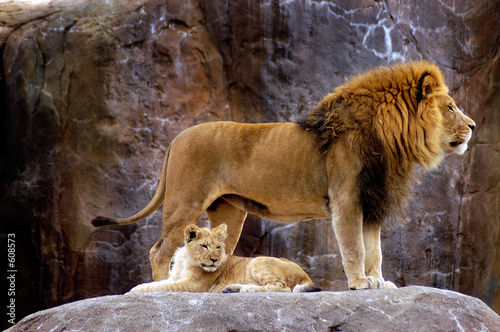

"Капский".
"Берберийский".
В чем отличие от "настоящих"?
Про трансваальских львов Паттерсон писал (фраза из моей статьи):
[img]Львы Калахари (Panthera leo krugeri) отличаются от других львов, как бы "подстриженной" гривой, которая у них обычно жёлтого цвета.[/img]
Такое нельзя сказать о берберийских львах.
Исчез капский подвид примерно в 1860-ом году.
Про берберийца:
Этот подвид исчез в начале 20-ых годов 20-го века.
Так что не исключено, что в некоторых зоопарковских львах течет кровь капских и берберийских родичей.
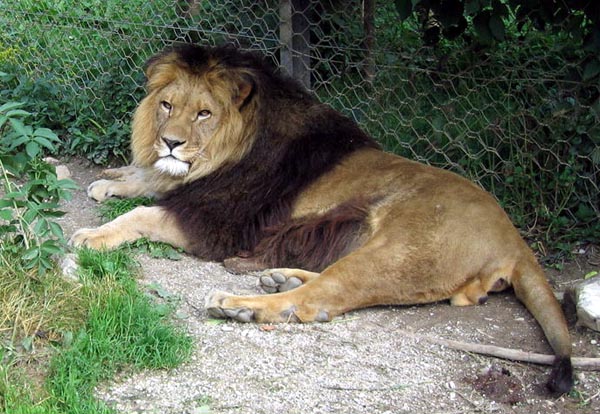
The Barbary Lion (also known as the "Atlas Lion" or the "Nubian Lion") once roamed wild in North Africa (from Morocco to Libya) and into Egypt. However, in 1922, the last known Barbary Lion in the wild was shot in the Atlas Mountains. Until the last few decades, it was believed that this largest of the lion subspecies was also extinct in captivity. Amazingly, possible Barbary lions or direct descendants of the original Barbary Lion have been identified within some zoo and circus populations. After years of research into the science of the Barbary Lion and stories of surviving examples, WildLink International, in collaboration with Oxford University, began the International Barbary Lion Project. Scientists will use the latest DNA techniques to identify the DNA 'fingerprint' of the Barbary Lion subspecies. WildLink International has taken bone samples from remains of Barbary Lions in museums across Europe. These samples are to be returned to Oxford University where the science team is extracting the DNA sequence that identifies the Barbary as a separate lion subspecies. Although the Barbary is officially extinct, WildLink International had identified a handful of lions in captivity around the world that are descended from the original Barbary Lion. The royal lions in Temara Zoo in Rabat, Morocco are some of them. These descendants will be tested against the DNA fingerprint and the degree of any hybridisation (from crossbreeding due to the virtual extinction of the Barbary) can then be determined. The best candidates with the least amount of out-crossing will then enter a selective breeding program targeted to 'breed back' the Barbary Lion. The final phase of the project will be to release the lions into a National Park in the Atlas Mountains of Morocco.
Настоящий берберийский лев. Отличите его без пол-литра от других африканских подвидов:
In the 19th century and the early 20th century Barbary lions were often kept in hotels and circus menageries. The lions in the Tower of London were transferred to more humane conditions at the London Zoo in 1835, on the orders of the Duke of Wellington. One famous purebred Barbary lion named "Sultan" lived in the London Zoo in 1896.
There is also a male Barbary lion named Beemer at the Wisconsin Big Cat rescue in Rock Springs. Another one is known from Leipzig. Currently several dozen individuals in captivity are believed to be Barbary lions: Port Lympne Wild Animal Park has twelve specimens [6] descended from animals owned by the King of Morocco. In addition, eleven animals believed to be Barbary lions were found in Addis Ababa zoo, descendants of animals owned by Emperor Haile Selassie. In addition, Zion Wildlife Gardens in New Zealand has several Barbary lions.[citation needed] It is thought that approximately 250 individuals are left in the world. There are supposed Barbary lions in South Africa in captivity and is part of this species conservation and are supposed to be found in some circuses around the world.[citation needed] Also, in 2006, a female lion named Sarabi lived at Big Cat Rescue, a wild cat santuary in Tampa, Florida. Sadly, Sarabi passed away before helping with the Barbary Lion population. Another lioness at Big Cat Rescue, Nickita, is believed to have traits of the Barbary Lion, in that she is the size of Sarabi and is almost double the size of the male lions at the sanctuary, Joseph and Cameron.[citation needed]
In the past scientists believed that the distinct subspecies status of the Barbary lion was established by its seemingly fixed external morphology, particularly its heavier mane. However, it is now known that various extrinsic factors influence the color and size of all lions' manes, such as ambient temperature.[7] As the cooler ambient temperature in European and North American zoos has been found to produce Barbary-like manes on ordinary lions, this characteristic is now considered an inappropriate marker for identifying Barbary ancestry.[8][9]
Despite this, mitochondrial DNA research published in 2006 does support the distinctness of the Barbary lions as a subspecies. The results found a unique mtDNA haplotype to be present in some of those museum specimens believed to be of Barbary descent. This may be a good molecular marker for identifying—and excluding—other potential Barbary lions.[9] The mtDNA results revealed that five tested samples of lions from the famous collection of the King of Morocco are not, according to this criterion, maternally Barbary.[9] However, in the same year, mtDNA research revealed that a lion specimen from Neuwied Zoo (which originated from the collection of the King of Morocco) is not of sub-Saharan origin according to its mitochondrial lineage and, thus, very likely a descendant of a Barbary lion.[10]
In 2008, in a major study published in PLOS Genetics, it was found that four "Atlas" lions from Morocco did not exhibit any unique genetic characteristics.[11] However, the Moroccan cats shared mitochondrial haplotypes (H5 and H6) with central African lions, and together with them were part of a major mtDNA grouping (lineage III) that also included Asiatic samples. According to the authors, this scenario was in line with their theories on lion evolution. They conclude that lineage III developed in east Africa, and then travelled north and west in the first wave of lion expansions out of the region some 118,000 years ago. It apparently broke up into haplotypes H5 and H6 within Africa, and then into H7 and H8 in west Asia.
While the historical Barbary lion was morphologically distinct, its genetic uniqueness remains questionable, and the taxonomic status of surviving lions frequently considered as Barbary lions, including those that originated from the collection of the King of Morocco, is still unclear.[12]
The Barbary Lion Project
The former popularity of the Barbary Lion as a zoo animal provides the only hope to ever see it again in the wild in North Africa. Many zoos provide mating programmes, which will help to increase the population of the species.
After years of research into the science of the Barbary Lion and stories of surviving examples, WildLink International, in collaboration with Oxford University, launched their ambitious International Barbary Lion Project. They are using the very latest DNA techniques to identify the DNA 'fingerprint' of the Barbary Lion subspecies. WildLink International has taken bone samples from remains of Barbary Lions in museums across Europe, like those in Brussels, Paris, Turin and others. These samples are returned to Oxford University where the science team is extracting the DNA sequence that identifies the Barbary as a separate subspecies.
Although the Barbary may be extinct, and is certainly extinct in the wild, WildLink International identified a handful of lions in captivity around the world that may be descended from the original Barbary Lion, like the royal lions in Temara Zoo in Rabat, Morocco. These descendants will be tested against the DNA fingerprint and the degree of any hybridization (from crossbreeding) can then be determined. The best candidates will then enter a selective breeding program that will 'breed back' the Barbary Lion. The final phase of the project will see the lions released into a National Park in the Atlas Mountains of Morocco.
As of March 2010, two cubs have been moved to 'The Texas Zoo' in Victoria, Texas where efforts are being made to preserve the endangered species under the WildLink International conservation program. The two cubs are offspring of the Barbary lion couple Cleopatra and Caesar, residents at the Austin zoo in Texas. The cubs used to be named Anastasia and Memphis but were renamed Gaia and Aesa upon being moved to their current location in Victoria.
Asiatic Lion—an Asian relative
In 1968, a study on the skulls of the Barbary, extinct Cape, Asiatic, and other African lions showed that the same skull characteristics—the very narrow postorbital bar—existed in only the Barbary and the Asiatic lion skulls. This shows that there may have been a close relationship between the lions from Northernmost Africa and Asia. It is also believed[by whom?] that the South European Lion that became extinct in 80-100 AD, could have represented the connecting link between the North African and Asiatic lions. It is believed that Barbary lions possess the same belly fold (hidden under the mane) that appears in the Asian lions today.
#1707 21 December 2011 15:09:57
- Crazy Zoologist
- Гость
Re: Лев (Panthera leo)
Вот перевод из русской вики:
Берберийские львы в неволе
Изначально учёные исходили из того, что берберийские львы вымерли и в неволе. Однако марокканские правители получали от берберов львов в подарок, когда эти животные уже становились довольно редкими. Особи, которых марокканский король Хасан II в 1970 году передал рабатскому зоопарку, являлись вероятно прямыми потомками тех львов. Морфология переданных экземпляров соответствовала историческому описанию берберийских львов. В 1998 году жило еще 52 льва, происходящих от львов султана, однако и они имеют примеси других видов. 11 особей, которые также могут быть потомками берберийских львов, живут в зоопарке Аддис-Абебы. Их предки были собственностью императора Хайле Селассие I.
Ранее фенотип берберийских львов был аргументом в пользу обоснованности их статуса как подвид. Согласно более новым исследованиям внешность этих зверей может быть следствием и внешних условий. Густая грива возможно лишь адаптация к холодной окружающей среде. У львов независимо от подвида появляется более густая грива, если они живут в достаточно холодном климате, например в европейских зоопарках. Генетические исследования в 2006 году, тем не менее, подкрепили статус берберийских львов как отдельного подвида. Это, однако, зависит от всё ещё не до конца ясного происхождения львов Хасана II.
В разных зоопарках и цирках есть экземпляры, которые вероятно происходят от берберийских львов, но с большой вероятностью нечистокровны. Существуют также особи, которые в результате скрещивания обладают внешними признаками берберийских львов, однако имеют лишь частично генетический материал этого подвида.
В конце XIX века в Лондонском зоопарке жил чистокровный берберийский лев по имени Султан.
Источник - Ronald M. Nowak: Walker's Mammals of the World, Johns Hopkins University Press, 1999 ISBN 0-8018-5789-9
#1708 21 December 2011 23:21:39
- Глеб
- Любознательный
- Зарегистрирован: 15 April 2009
- Сообщений: 143
Re: Лев (Panthera leo)
Кот :
Что вы называете рыком? Приведите пример в ютюбе. Лев рычит подобно всем пантерам, но в отличие от них может реветь. Именно так он оповещает округу о своём присуствии и предъявляет права на свою территорию.
Этому вопросу есть посвященный целый научно-популярный фильм. Там рассказывается об анатомии львиной глотки, гортани , которые усиливают звук. Рычание льва признается самым громким звуком которое может издавать наземный хищник. Ссылку к сожалению не могу дать, но думаю не я один смотрел этот фильм. Но эти данные я запомнил точно, потому-что и в других местах встречал.
Берберийский лев должен быть немного ниже обычного ростом и иметь коротковатые лапы. НА фото вряд ли можно различить.
Неактивен
#1709 21 December 2011 23:32:19
- Crazy Zoologist
- Гость
Re: Лев (Panthera leo)
Про тигринный рык пишут то же самое.
Характерный львиный рёв вот - http://www.youtube.com/watch?v=aUfDxRel … re=related
Так тигр просто не делает. Он просто рычит - http://www.youtube.com/watch?v=r6S0W0p- … re=related
#1710 21 December 2011 23:37:27
- Wolf
- Без пяти минут зоолог

- Зарегистрирован: 13 January 2009
- Сообщений: 2583
Re: Лев (Panthera leo)
Кот :
Про тигринный рык пишут то же самое.
Характерный львиный рёв вот - http://www.youtube.com/watch?v=aUfDxRel … re=related
Так тигр просто не делает. Он просто рычит - http://www.youtube.com/watch?v=r6S0W0p- … re=related
Тут тигриный рёв:
http://www.youtube.com/watch?v=EoXqF7SS … re=related
Per aspera ad astra
Неактивен
#1711 21 December 2011 23:38:40
- Сorvin
- Модератор

- Откуда: Двор Хаоса
- Зарегистрирован: 28 December 2009
- Сообщений: 5932
Re: Лев (Panthera leo)
Есть неплохая статья G. E. Weissengruber et al. "Hyoid apparatus and pharynx in the lion (Panthera leo), jaguar (Panthera onca), tiger (Panthera tigris), cheetah (Acinonyx jubatus) and domestic cat (Felis silvestris f. catus)" 2002:
http://www.ncbi.nlm.nih.gov/pmc/article … =pmcentrez
Перевод я уже приводил, но выложу ещё раз:
http://narod.ru/disk/35138551001/Hyoid% … n.doc.html
В палеонтологии отрицательный результат ещё ничего не значит.
Леон Берген
Неактивен
#1712 21 December 2011 23:41:22
- Wolf
- Без пяти минут зоолог

- Зарегистрирован: 13 January 2009
- Сообщений: 2583
Re: Лев (Panthera leo)
Перевод я уже приводил, но выложу ещё раз:
О, на русском. Спасибо!
Анатомия львов:
http://bigcats.ru/index.php?bcif=lions-anatomy.shtml
Отредактировано Аллозавр (21 December 2011 23:41:56)
Per aspera ad astra
Неактивен
#1713 21 December 2011 23:45:19
- Crazy Zoologist
- Гость
Re: Лев (Panthera leo)
Да, прикольный рёв. Но у льва он другой. Более раскатистый.
Ещё ревет снежный барс. Но совсем по-другому. Депрессивно так.
#1714 21 December 2011 23:46:37
- Wolf
- Без пяти минут зоолог

- Зарегистрирован: 13 January 2009
- Сообщений: 2583
Re: Лев (Panthera leo)
Более раскатистый.
Это - да.
Но всё-равно, реветь ведь может. ![]()
Per aspera ad astra
Неактивен
#1715 22 December 2011 00:49:50
- Wolf
- Без пяти минут зоолог

- Зарегистрирован: 13 January 2009
- Сообщений: 2583
Re: Лев (Panthera leo)
Интересная статья:
http://bigcats.ru/index.php?bcif=bigcat … _L_T.shtml
И ещё... Артём, у тебя нету в ЖЖ заметок о размерах подвидов? Если есть, дай ссыль, плиз.
Per aspera ad astra
Неактивен
#1716 22 December 2011 00:52:06
- Crazy Zoologist
- Гость
Re: Лев (Panthera leo)
Нету. Они мало чем отличаются размерами. Самый мелкий по-моему сенегальский. В среднем самый крупный масайский и трансваальский по идее должен быть.
#1717 22 December 2011 01:08:21
#1718 22 December 2011 01:37:03
- Crazy Zoologist
- Гость
Re: Лев (Panthera leo)



Высота львов и тигров:
http://www.youtube.com/watch?v=hVCQ7-V4YSc
http://www.youtube.com/watch?v=e2M8R4UGuiE




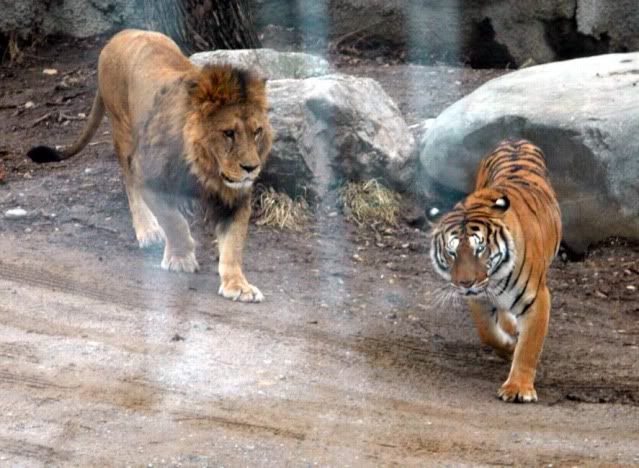

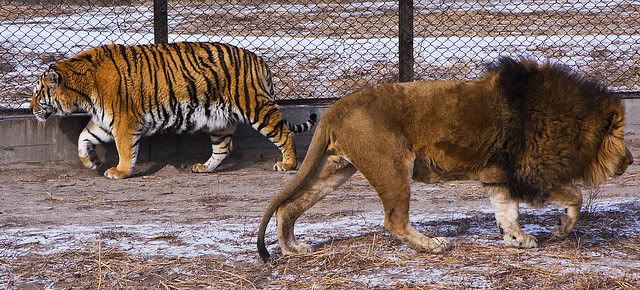

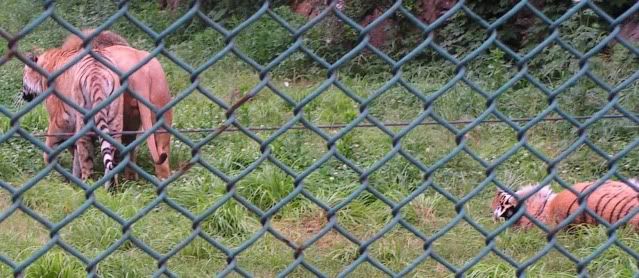
Lion vs Tiger Height Length Part 3 - http://www.youtube.com/watch?v=QC_ULP6uiwA
#1719 22 December 2011 04:17:00
- Crazy Zoologist
- Гость
Re: Лев (Panthera leo)

#1720 22 December 2011 05:04:10
- Rafailov
- Без пяти минут зоолог

- Откуда: Покровск, Якутия
- Зарегистрирован: 06 July 2010
- Сообщений: 1400
Re: Лев (Panthera leo)
Эта сцена чепрачного шакала и льва напомнила мне детскую историю Льва Толстого "Лев и собачка"!
P.s. Надо же, фамилию Великого Льва Николаевича написал с маленькой буквы, срочно исправляю.
Отредактировано Rafailov (22 December 2011 05:06:11)
Прежде, чем бороться со мной за экологию, сначала посчитайте, сколько горючего сжигает ваша посудина!
Неактивен
#1721 24 December 2011 14:04:12
- Глеб
- Любознательный
- Зарегистрирован: 15 April 2009
- Сообщений: 143
Re: Лев (Panthera leo)
Аллозавр :
Кот :
Про тигринный рык пишут то же самое.
Характерный львиный рёв вот - http://www.youtube.com/watch?v=aUfDxRel … re=related
Так тигр просто не делает. Он просто рычит - http://www.youtube.com/watch?v=r6S0W0p- … re=relatedТут тигриный рёв:
http://www.youtube.com/watch?v=EoXqF7SS … re=related
Тигриный рык слышен макс. за 2 км. Если отойдете на 3 км. уже не услышите. А львиный и за 6 км. и за 8 слышно. Хотя вблизи эта разница тоже чувствуется.
В том фильме ученые сравнение приводили и упоминали для сравнения рык других животных. Про тигра они прямо сказали - 2 км.
Неактивен
#1722 24 December 2011 16:25:20
- Crazy Zoologist
- Гость
Re: Лев (Panthera leo)
То что лев ревет сильнее я не оспаривал.
Но на 2 км слышен даже лай собак или крики людей при хорошей погоде и на ровном месте.
#1723 27 December 2011 02:22:00
- Гюнтер
- Любознательный

- Зарегистрирован: 15 September 2011
- Сообщений: 80
Re: Лев (Panthera leo)
Сколько можно уже этих сравнений(срачей) тигринно-львинных,даже целые сайты есть...переливание из пустого в порожнее,ничего нового,всё давно говорено-переговорено
Неактивен
#1724 29 December 2011 15:00:16
- Глеб
- Любознательный
- Зарегистрирован: 15 April 2009
- Сообщений: 143
Re: Лев (Panthera leo)
Nat_Geo_Rus_2011_10_05 (2).jpg
http://s017.radikal.ru/i439/1112/29/3d524efa133b.jpg - ссылка, картинка не получилась.
Неактивен
#1725 29 December 2011 15:02:08
- Глеб
- Любознательный
- Зарегистрирован: 15 April 2009
- Сообщений: 143
Re: Лев (Panthera leo)
Об этом не говорили. Почему такими получаются лигры и тигоны.
Неактивен